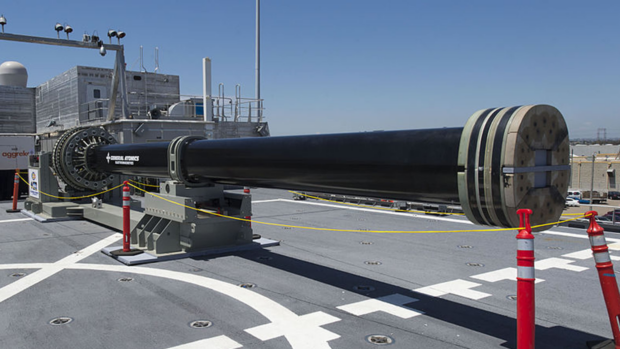The Chinese People’s Liberation Army Navy recently conducted a test on the world’s most powerful Gauss cannon. According to the South China Morning Post, this electromagnetic launcher was able to accelerate a 124-kg projectile to a speed of 700 kph in less than 0.05 seconds. In comparison, regular artillery shells typically travel at around 2,237 mph or 1,000 m/s, as reported by Interesting Engineering. While this technology might not be immediately viable as a military weapon, further research and development could make it possible. Additionally, refining this technology could open up new possibilities, such as using it for space launches and reducing reliance on rocket propulsion systems. Gauss guns are fascinating scientific concepts that deserve exploration. In this article, we will delve into how the world’s most powerful Gauss cannon works. Later, we will also cover other military innovations from different countries.
But how exactly does a Gauss cannon work? The concept of a Gauss gun involves firing projectiles using electromagnetism. The first Gauss gun was invented by Norwegian scientist Kristian Birkeland in 1845 at the University of Oslo, according to Collegedunia. To create a safe Gauss gun at home, you would arrange three steel balls and a magnet in an exposed metal tube. The three balls should be placed ahead of the magnet, and then another steel ball should be rolled onto the other side of the magnet. As the magnet attracts the rolling ball, it accelerates, and this impact pushes the other ball with similar force and speed. Birkeland’s early version of the Gauss gun was able to accelerate 500-gram projectiles to 50 m/s. However, the Chinese Gauss cannon can propel significantly heavier objects at faster speeds because it incorporates a solenoid barrel. A solenoid is a wire coil that uses electromagnetism to move objects. The inclusion of a solenoid barrel offers two advantages. Firstly, it prevents the projectiles from touching the interior of the barrel, which reduces friction. Secondly, the force generated by the solenoid further accelerates the projectile. Guan Xiaocun, a professor at Naval University of Engineering, explains that the Gauss cannon has advantages over conventional artillery, such as higher launch speeds, lower launch costs, and shorter preparation times, as reported by Interesting Engineering.
The potential of the Gauss cannon goes beyond military applications. The Transactions of China Electrotechnical Society, as translated by Interesting Engineering, states that the technology has the potential to revolutionize speed, range, power, accuracy, safety, flexibility, and reliability. It can find broad applications in areas such as weapon systems, near-earth satellites, and high-speed missile launches. The Chinese military’s electromagnetic launch program is also investing in a larger coil cannon, but this improved version is still in the testing phase, according to SCMP.
Apart from the Gauss cannon, other recent military projects have also emerged. For instance, China announced the development of a cooling system for laser weapons that allows them to fire nonstop. Yuan Shengfu and scientists from the National University of Defense Technology shared their findings on this cooling system in Acta Optica Sinica. The system reduces a laser weapon’s temperature by coating it with helium, thereby preventing overheating. This breakthrough could give China a significant advantage over the US in the development of laser weapons, as former British military official Steve Weaver highlights.
On the other hand, the United States is experimenting with AI integration in fighter jets. Lockheed Martin, a global security and aerospace company, has developed the VISTA X-62A or Variable In-flight Simulation Test Aircraft, which simulates the behaviors of existing aircraft like the F-16 fighter jet. This allows researchers to test artificial intelligence systems for these planes without risking human pilots. Lockheed Martin emphasizes that the goal is to keep people in control while enabling them to be safer, more effective, and better able to focus on higher-level tasks by giving them the power to make more informed decisions quickly.
In conclusion, the Chinese military reportedly conducted a test on the world’s most powerful Gauss cannon, capable of propelling a 124-kg projectile to a speed of 700 kph in less than 0.05 seconds. However, further details about the project are currently unavailable. Military advancements like the Gauss cannon can also find applications outside of warfare, such as alternative methods for satellite launches. Many everyday products and services have been derived from military technology, and it is worth exploring these innovations and other digital trends. If you want to learn more, visit Inquirer Tech.
Denial of responsibility! VigourTimes is an automatic aggregator of Global media. In each content, the hyperlink to the primary source is specified. All trademarks belong to their rightful owners, and all materials to their authors. For any complaint, please reach us at – [email protected]. We will take necessary action within 24 hours.


